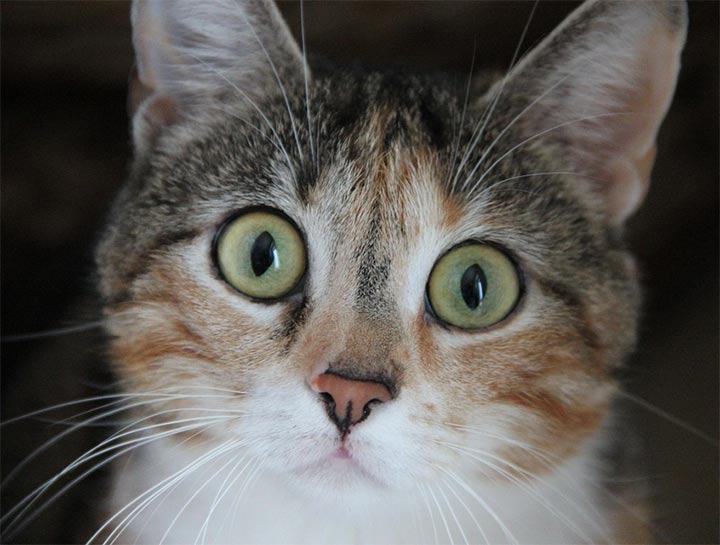Common Feline Emergency Visits
Conditions we often see cats for in an emergency.
Anaphylaxis or anaphylactic shock
This is a severe allergic reaction characterized by sudden collapse and severe breathing difficulties. The first clinical signs that your cat is experiencing anaphylactic shock are often swelling around the face or muzzle, the appearance of wheals or hives on the skin of the cat, vomiting or diarrhea, and restlessness. These clinical signs can quickly progress to collapse and breathing difficulty. There are many causes for anaphylaxis that vary from insect stings, contact allergies to injection reactions. You should seek veterinary care immediately if you think your cat or kitten may be experiencing anaphylaxis.
Automobile injury
Make sure your cat has a clear airway, but do not put your hand in its mouth if your cat is conscious. Cover wounds with whatever suitable material is available. Handle your cat with care, supporting its body as much as possible. Carry it in a basket, box, or cage to the veterinary hospital.
Bites and fight wounds
Clean the wounds immediately with warm water cover them to protect them from further contamination, and seek veterinary attention.
Bleeding (hemorrhage)
If hemorrhage is severe on a limb, apply a tourniquet above your cat’s wound just tight enough to significantly reduce flow of blood. Be sure to loosen it every twenty minutes. Apply a pad of cotton or other absorbent material over the wound or bleeding point. Bandage it firmly in place or simply apply direct pressure while you seek veterinary care.
Breathing difficulty
If your cat is having difficulty breathing, especially if the cat is “open mouth breathing”, you need to get to the veterinarian without delay.
Burns
Unless you witness these injuries, they are not frequently apparent until later when scabs or loss of hair or skin are noted. This is because the initial burns are usually hidden by the cat’s fur. One of the more common burns suffered by cats is when they jump onto a hot woodburning stove. Cool the burned area with cool water by running water over the burn or cover it with wet towels. This also helps remove caustic substances (acid or alkaline) if these are the cause. With caustic substances, flush the area by holding it under running water for 15 minutes. If loss of skin occurs, cover the area with the cleanest material available. In all cases, contact your veterinarian immediately.
Convulsions or seizures
A seizure is a series of violent, uncontrolled spasms. Most seizures last for less than two minutes. If a seizure lasts more than five minutes or if several seizures occur in rapid succession, your cat requires immediate veterinary treatment to prevent permanent damage. During the seizure, DO NOT put your hand in your cat’s mouth. The cat WILL NOT swallow its tongue. Protect your cat from injuring itself and prevent if from falling. Otherwise, do not attempt to interrupt the seizure. Once your cat has recovered from the seizure, keep it warm and provide reassurance by talking calmly or gently petting it. Your cat will require veterinary attention to determine the cause of the seizures, but as long as the seizure wasn’t prolonged, you can book the appointment at your earliest convenience.
Diarrhea or vomiting that is persistent
Repeated or continuous vomiting or diarrhea, with or without blood, could be a sign of poisoning, an intestinal obstruction, or acute gastrointestinal infection. Dehydration is a major concern in cats. Contact your veterinarian if you observe blood in the stool, if the vomiting or diarrhea persists beyond six to twelve hours or if your pet becomes less responsive or weak. Do not force your cat to eat or drink – you may inadvertently worsen the condition. NEVER administer a human medication to your cat unless specifically advised to do so by your veterinarian. Both acetaminophen (Tylenol) and acetylsalicylic acid (Aspirin) are toxic to cats.
Eye injury
Many eye injuries can cause blindness or even loss of the eye if left untreated. If the cornea is scratched or punctured, it will be very painful. Prevent your cat from scratching at its eye causing further damage. Sudden blindness or vision loss (your cat will start bumping into things or have trouble jumping up onto the furniture, and you will probably notice that the pupils are widely dilated) may be a symptom of glaucoma. If your cat develops symptoms such as runny eyes, colored discharge from the eyes, squinting, sudden dilation of the eyes, or apparent blindness, get immediate veterinary treatment.
Heatstroke
The signs of heatstroke are excessive panting, lethargy, and distress; unconsciousness and death can quickly follow. Most cases of heat stroke occur when a cat is left in its carrier in an unventilated car. For immediate treatment, cool your cat’s body temperature by placing it in a tub of cool water. When you are ready to transport your cat to the veterinary hospital, wrap it in a cool, wet towel. Animals that have been exposed to heat or smoke from a fire should be offered water as soon as the situation is stable.
Hemorrhagic gastroenteritis
This condition is characterized by severe bloody diarrhea, with or without vomiting. Often the cat will be very weak or will collapse. Seek immediate veterinary attention. This is a serious condition, especially in cats.
Injuries
Some injuries constitute medical emergencies, depending on the type and extent of wounds. If you suspect your cat has a broken bone, put it into a carrier or a box to support the affected area. Any penetrating wound to the chest or abdomen and virtually any injury involving the eye should be regarded as a medical emergency. Injuries to the head or those causing difficulty breathing should also be treated as immediate emergencies.
Poisons
Common causes of poisoning in a cat include eating mice that have been killed by poison, eating slug or snail bait, or drinking ethylene glycol (antifreeze). The typical symptoms of poisoning are vomiting, diarrhea, salivation, skin irritation from caustic irritants, collapse or seizures. If a product label is available, see if there are first aid instructions, such as whether or not to induce vomiting. You can usually induce vomiting with 5 ml (one teaspoon) of hydrogen peroxide orally or a teaspoon of salt placed in the back of the mouth. Keep a sample of the vomit for testing. DO NOT INDUCE VOMITING if your cat has ingested foreign objects (plastic wrapping, paper, etc.). If corrosive or toxic material is on the skin, rinse for fifteen minutes. Bring a sample of the suspected poison with its container to the veterinary hospital.
Unconsciousness or collapse
This may occur with or without seizure activity. It often occurs without warning, such as in the case of sudden heart failure or following a blow to the head. Collapse should always be treated as a medical emergency.
There are a number of common household products that can be toxic to cats. For a comprehensive list, visit the Pet Poison Helpline.
This client information is based on material written by: Ernest Ward, DVM © Copyright 2009 Lifelearn Inc. Used and/or modified with permission under license.

